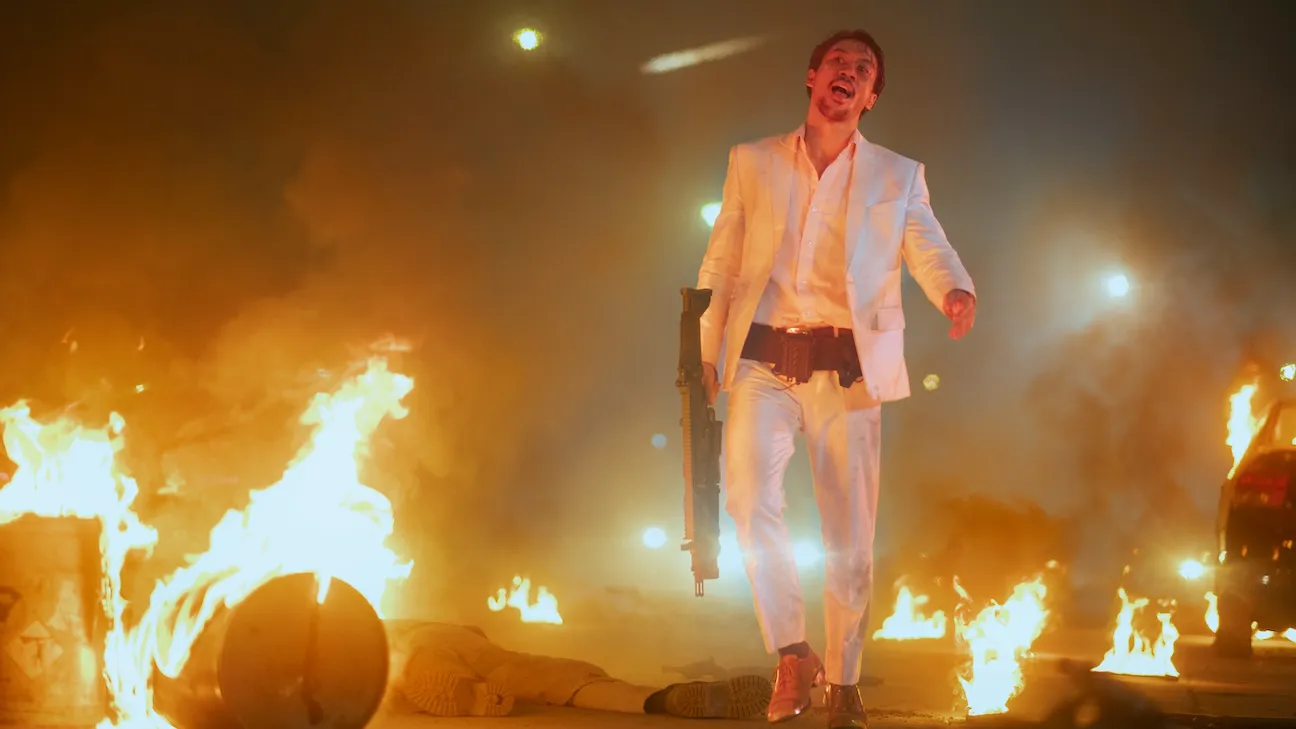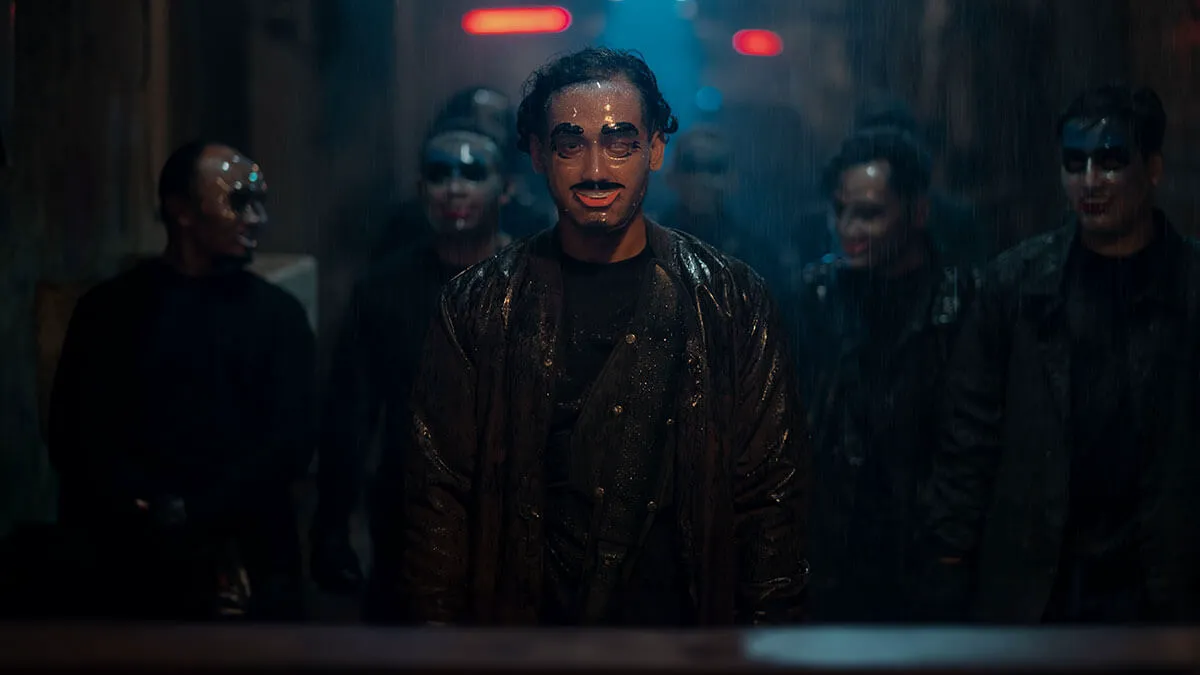In the snow-laden Aokigahara Forest of Japan, a group of Yakuza gangsters are guarding their boss against a potential assassination. One of the thugs begins to spin a yarn about mysterious assassins known as the Shadows: they appear out of thin air, show no mercy, and vanish into the darkness, leaving behind a mountain of corpses. The boss laughs hysterically, dismissing it as nonsense, but still orders heightened security. Predictably, within minutes, one less Yakuza clan exists in Japan. The assassins do emerge from the shadows, dispatching the gangsters with extreme brutality, and to the surprise of the traditional Asian mindset, they turn out to be women.
A less seasoned killer, codenamed Thirteenth (Aurora Ribero), allows herself a moment of distraction over a geisha accidentally killed during the gang slaughter, resulting in a minor wound. This disappoints her mentor (Hana Malasan), who angrily sends her to lay low in Jakarta. While awaiting instructions, Thirteenth suppresses troubling childhood memories with pills, hardens her body and spirit, and observes the unjust world around her. When local drug dealers murder the mother of a neighboring boy (Ali Fikry), with whom Thirteenth has shared a few words and felt a connection, and then kidnap him, her patience snaps. Acquiring weapons and ceasing her medication, the young assassin declares war on Indonesian crime.

Aurora Ribero as Nomi in a still from “The Wandering Shadow”
Timo Tjahjanto: The Master of Mayhem
Timo Tjahjanto is a leading figure in the new wave of Asian action cinema. The director of “The Wandering Shadow” started alongside Gareth Evans, the mastermind behind “The Raid,” with short films for horror anthologies like “V/H/S/2” and “The ABCs of Death.” Later, he formed the creative duo The Mo Brothers with Kimo Stamboel. This tandem produced some of Indonesia’s most gruesome films: the slasher “Macabre,” the bleak thriller “Killers,” and the action film “Headshot” (linked to the original “Raid” duology only by the ingenuity of Russian distributors). While Stamboel focuses on the story and atmosphere of The Mo Brothers’ works, Tjahjanto’s interests lie in the purely physiological aspects.
Embarking on a solo career, Tjahjanto has concentrated on perfecting action sequences and emphasizing graphic violence. For him, the plot is secondary. If one delves into the details of the story that propels the characters of “The Wandering Shadow” through their bloody dance amidst severed limbs and exposed entrails, it becomes clear that the audience is witnessing a run-of-the-mill tale of a violated childhood and evil emanating from those in power. The criminal underworld of Jakarta is a typical melting pot of drug dealers, corrupt cops, and the politicians behind them, for whom any means justify a successful election campaign. Against this bleak backdrop, Thirteenth’s dismantling of gangsters over a barely known boy seems comical, even to the perpetrators themselves. Throughout the film, mortally wounded villains, with blood frothing from their mouths, scream, “He’s nothing to you!”

Still from “The Wandering Shadow”
Action Overload
However, the far-fetched motivation of the protagonist doesn’t detract from the enjoyment of the mind-blowing action. Tjahjanto is unparalleled in this regard. High-speed gunfights in the style of “John Wick” seamlessly transition into full-contact combat using any available implements, be it frying pans, motorcycle helmets, or steel pipes. Batara Goempar’s camera performs incredible acrobatics, switching from first-person perspectives to 360º panoramas in seconds, meticulously capturing the most unsightly anatomical details of each clash between Thirteenth and the unfortunate gangsters. The rhythm of the action scenes in “The Wandering Shadow” is akin to a musical composition – not classical, of course, but a healthy dose of industrial rock for the viewers.

Still from “The Wandering Shadow”
Paradoxically, it is the action that becomes the film’s main problem, or rather, its excess in relation to the overall runtime. One can overlook the derivative story and superfluous plotlines intended to expand the film’s universe (Tjahjanto clearly has plans for at least a couple of sequels, if not a franchise). However, two and a half hours of carnage, however diverse and inventive, can tire even the most ardent fans of the genre. “The Wandering Shadow” is incredibly drawn out, as if the director tried to cram in every idea that came to mind during production. And Netflix, the film’s distributor, has never been known for its ability to restrain enthusiastic filmmakers – what does the length of the film matter if investors are only interested in the number of “clicks”?
Final Verdict
“The Wandering Shadow” is an entertaining, bloody action film in the best traditions of the new Indonesian extreme cinema, a pure adrenaline rush. However, its desperate self-admiration eventually backfires, making viewers realize that they are not so necessary at this festival of violence.